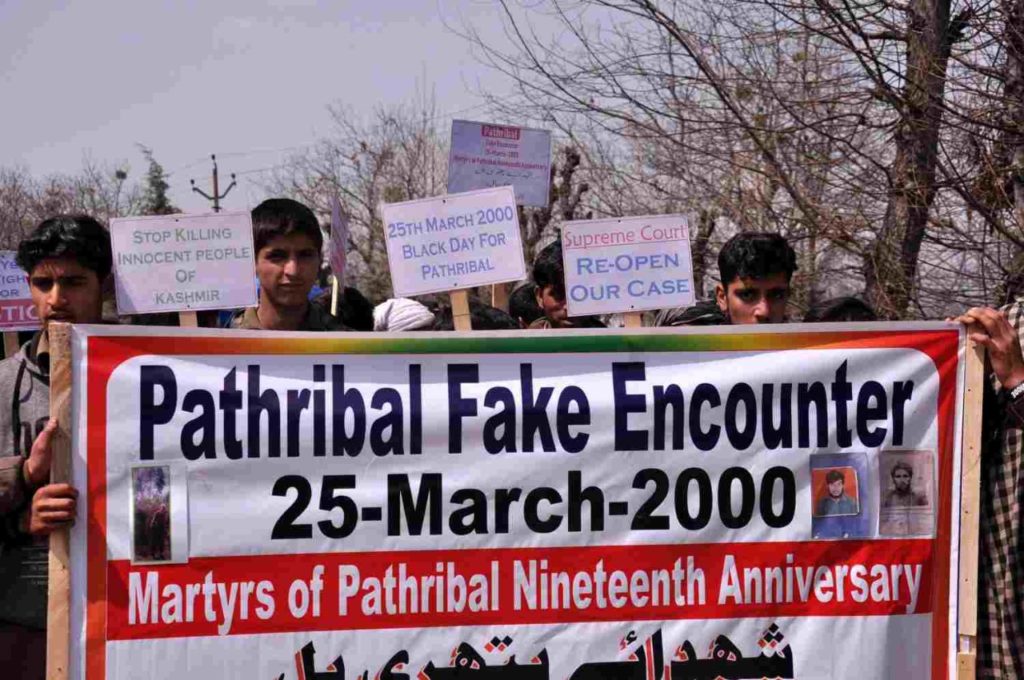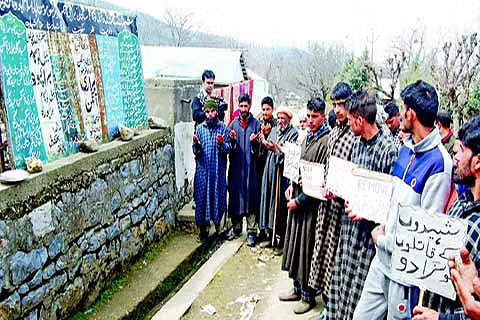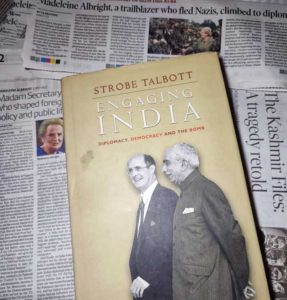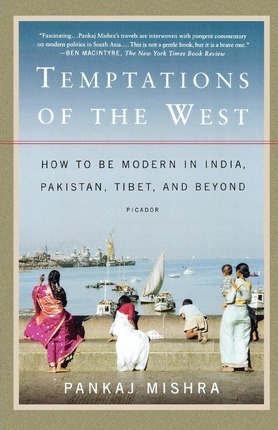Amidst Modi-Biden bonhomie, Time for Sikhs to Ask About False DNA Reports
Kashmiri docs sacked for false post-mortem reports So, Time for Sikhs to Ask About False DNA Reports‘Coz We Want To Know: Who killed 35 Sikhs in Chittisinghpora? Memory Runs Deep: Since PM Modi has claimed on American soil that democracy runs in India’s DNA, it is time for a dip-stick check. After all, Sikhs are only asking who mixed the blood in those DNA samples, so that they can understand who killed 35 Sikhs hours before Indian PM was to meet a US President. A recall by senior journalist SP Singh.
![Kashmiri docs sacked for false post-mortem reports So, Time for Sikhs to Ask About False DNA Reports‘Coz We Want To Know: Who killed 35 Sikhs in Chittisinghpora? Memory Runs Deep: Since PM Modi has claimed on American soil that democracy runs in India’s DNA, it is […]](https://www.theworldsikhnews.com/wp-content/uploads/2023/06/Modi-with-Biden-360x267.jpg)
Just when Prime Minister Narendra Modi tells the world that democracy runs in India’s DNA, it is absolutely the right time to ask a question about DNA adulteration.
At a time when Modi is visiting the United States, wowing and wooing Uncle Sam with his charisma, and creating Biden-Modi-Jill frames to hang in many Diaspora bhakats’ homes, the Indian media on Friday carried out news reports about two J&K doctors falsifying post-mortem reports of dead Kashmiri women to denigrate the Indian security forces.
An American president & false post-mortem or DNA reports in Kashmir must always remain a subject of very special interest for Kashmiris, Sikhs and people across the country, particularly when Modi claims democracy runs in India’s DNA.
Mainstream Indian media news reports on Friday described how two J&K doctors – Dr Bilal Ahmad Dalal and gynaecologist Dr Nighat Shaheen Chilloo – allegedly fabricated evidence in the “2009 Shopian ‘rape-murder’ case” after discovery of the bodies of two young Muslim women on May 30, 2009 near a stream in Shopian, and ensuing protests directed against security personnel.A CBI probe later found that the two women were never raped or murdered, and that the two doctors were “actively working” with Pakistan and were part of a conspiracy to falsify the post-mortem report of the victims, who had actually died due to drowning.
So, basically, these doctors were trying to foment disaffection against the Indian state by falsely accusing the security forces of rape and murder, media reported.
But why should such a shocking piece of news be of acute interest to us in Punjab, more so the Sikh community?
It was an American president, Bill Clinton, on the eve of whose visit to India, 35 Sikhs were killed in Chittisinghpora, Kashmir, and the Indian authorities had eventually provided DNA samples of the “killers”.

For some reason, the community has stopped asking who killed 35 Sikhs in Chittisinghpora, Kashmir, on March 25, 2000. Also, it no more raises questions about the way “killers” were identified, killed in an “encounter”, their bodies buried, then exhumed, and DNA tests carried out.
It seems that by the time the reports of the DNA tests came out, the stakeholders in the Sikh community, Punjab’s politics and self-styled liberal seculars lost all interest in the story — a story that Kashmiri men and women remember in all its finer details and often wonder why the Sikh activists or their panthic bodies like the SGPC, the Akal Takht or the entire line up of Akali Dals never bothered to ask: “So, who killed 35 Sikhs just before Bill Clinton landed in India?”
Now that two Kashmiri doctors have been sacked for falsifying the post-mortem reports to tarnish Indian security forces, it is high time to ask who was mixing blood of a man and a woman, or replacing a man’s blood with female’s, or a female relative’s blood with blood of two different men, when all we wanted to know was who killed 35 Sikhs just before a US president was to meet the Indian prime minister?
Since Indian security forces, investigative agencies and law enforcement is currently on to how post-mortem reports are falsified, it is time New Delhi answers pertinent questions about DNA reports scandal.
After all, it interests the entire Panth, the Sikhs, the Punjabis, the Kashmiris, and we hope, even the Americans. In any case, since the regime in New Delhi and Nagpur is now heavily invested in peddling stuff like *The Kashmir Files,* and talking about killings of minorities in Kashmir, this is the moment to travel back in time and ask for DNA corruption report.

But let us go back and understand the story chronologically.
March 20, 2000: Unidentified terrorists donning army fatigues lined up and gunned down 35 Sikhs in front of two gurdwaras in the dead of the night in Chittisinghpora, Kashmir, hours before Bill Clinton was to touch down in Delhi. The 36th Sikh, a lone man, escaped with a gun wound to tell the story.
Clearly, some force was trying to send a message to Washington. Pakistan said Indian security forces were behind the massacre because India wanted to defame Pakistan, while the Vajpayee government claimed it was the doing of Lashkar-e-Taiba and Hizbul Mujahideen, both groups backed by Pakistan.
Clinton was still in India when the breakthrough came. A man called Yaqub Wagay, a Muslim resident of Chittisinghpora, had been caught. He had led the killers to the hapless Sikhs. By all accounts, Clinton must have been mighty impressed.
If he wasn’t, he would have been a couple of days later. Hours before the then Union Home Minister L K Advani was to visit the massacre site on March 25, 2000, about 11 miles from Chittisinghpora, in the village of Panchalthan, the army and the J&K police gunned down five LeT terrorists who, it said, were responsible for the Chittisinghpora massacre of 35 Sikhs.
Advani and then CM Farooq Abdullah were given a special presentation with help of site maps about how the operation was carried out.
The Five Who “Killed” 35 Sikhs
Meanwhile, something else had happened. Five men had gone missing from two neighbourhood villages, Brarianagan and Halan, and Anantnag town. Their kin claimed they were taken away by army men in the middle of the night.
While the government had claimed that five LeT terrorists were killed in a five-hour-long gun battle, villagers were not aware of any such shootout.
Suspicion arose that the five killed in encounter and declared foreign militants could be the same five men abducted from their houses by the army. A villager from Pathribal, who saw the bodies of the men killed in the encounter, recognised one of them as Jumma Khan, one of the abducted men.
Anantnag saw processions by relatives of the five missing men. It became a major issue and the government was forced to order a judicial enquiry. There was no explanation why the five dead terrorists were buried in graveyards miles apart from each other.
Who killed the five alleged ‘killers’ of 35 Sikhs?
Who killed the five men after they had gone missing from Brarianagan and Halan, the villages near Chittisinghpora, on March 25, 2000?
It is surprising that the Sikh community didn’t ask this question.
Protests over disappearance of five, and more killings
Angered by the disappearance of five young men, protestors marched towards the deputy commissioner’s office on April 3, 2000, where CRPF and police opened fire, killing nine of them. Some of the dead were close relatives of the five missing villagers.
As the crescendo of protest rose, the J&K government suspended a couple of police officers, including the district police chief, and ordered that the bodies of the five men killed in the encounter be exhumed and DNA samples be examined.
The Exhumed Killers of 35 Sikhs
On April 6-7, 2000, exhumation of bodies was carried out in full public view as relatives narrated what a particular dead man was wearing, or the ring on a deceased’s finger or the watch on his wrist. Every single detail they told about those still buried six-feet-under turned out to be true.
Among many others, Muzamil Jaleel of The Indian Express, a sterling journalist known for his courageous writings and a stickler to the ethics of the profession, was present at the exhumation site.
Novelist, essayist and award winning author Pankaj Mishra, who had reached Chittisinghpora within a day of the massacre of 35 Sikhs, describes the exhumation thus:
_”When the bodies were finally exhumed, almost two weeks after the murders, they were discovered to have been badly defaced. The chopped-off nose and chin of one man—a local shepherd—turned up in another grave. The body of a local sheep and buffalo trader was headless—the head couldn’t be found—but was identified by the trousers that were intact underneath the army fatigues it had been dressed in. Another charred corpse—that of an affluent cloth-retailer from the city of Anantnag, presumably kidnapped and killed because he was, like the other four men, tall and well-built and could be made to resemble, once dead, a “foreign mercenary”—had no bullet marks at all. Remarkably, for bodies so completely burnt, the army fatigues that they were dressed in were almost brand new.”
What happened to the DNA?
The truth about Patharibal was already out, but efforts were made to corrupt the evidence. Muzamil Jaleel reported how, on February 26, 2001, “the Hyderabad laboratory wrote to J&K Police, saying that samples supposed to be of a female relative of one of the victims actually belonged to a male.” Similarly, a sample supposed to be of a female relative actually turned out to be the blood of two different men. Initially, the government kept the scandal under wraps, but by the March of 2002, CM Farooq Abdullah told the J&K assembly that officials had indeed tampered with the DNA samples.
The Barakpora Firing Probe
Justice S. R. Pandian Commission, set up by the J&K Government to inquire into the Barakpora firing incident in which nine people including relatives of Patharibal fake encounter victims were killed, indicted the security forces for “murder of peaceful protestors” and said these were clearly linked to the “faked encounter killings in Pathribal”.

The Official Confession
The government, through then Deputy Commissioner of Anantnag, finally acknowledged the Pathribal encounter to be fake, conceded that victims were “innocent” and ordered grant of Rs 1 lakh as ex gratia relief to next of their kin.
The DNA Tampering
On March 15, 2002, an inquiry into tampering of DNA evidence was ordered, and a senior doctor and others involved were suspended. Fresh samples examined by CFSL, Kolkata established the truth behind the Pathribal fake encounter. Inquiry by Kuchai Commission found that forensic team and police had fudged the DNA samples.
The Milkman Story
The entire police case was built upon a man called Mohammad Yousuf Wagay, who, the police had told Advani and media, had guided the “killers” to the village. His arrest within five days of the killings of 35 Sikhs was announced in New Delhi in full glare of the world’s cameras by none less than the Union Home Secretary Kamal Panday. It was on the leads provided by this Wagay guy that the police had engaged five “foreign terrorists” in a 5-hour-long gun battle, killing all of them.
Eventually, the Anantnag Police exonerated Mohammad Yousuf Wagay after months of investigation and reduced the charge from Section 302 for being an accomplice in the murder of 35 Sikhs to trying to disturb breach the peace (CrPC 107/151).
It was now clear that Wagay was framed, that the five men killed at Pathribal and dubbed as foreign militants were innocent local villagers abducted from their homes.

What happened eventually?
Seven months after killings of 35 Sikhs, CM Farooq Abdullah announced a judicial commission headed by Justice Pandian. It was to inquire into Chittisinghpora massacre as well as Pathribal fake encounter. The good judge had completed his probe into Brakpora firing and linked it to Pathribal fake encounter, but the CM had a change of heart and decided there was no need to probe Chittisinghpora. Eventually, the Pathribal case went to the CBI in 2003 which took three years to finally clinch that it was a fake encounter and a “cold-blooded” plot by Indian Army officers.
So, what happened in Chittisinghpora?
No one ever probed Chittisinghpora massacres. The CBI’s remit was limited to Pathribal. The clear conclusion is that no one wants to know the truth about Chittisinghpora.
At one stage, security forces claimed to have arrested two Lashkar militants Mohammad Suhail Malik and Wasim Ahmed, both Pakistani nationals, and recorded their disclosure about involvement in Chittisinghpora massacre. They were acquitted by the trial court, but the order was challenged in the Delhi High Court which again acquitted them in May 2012.
Eventually, and silently, they were repatriated to Pakistan. No one made any noise.
* * *

In 2006, Madeleine Albright, the highest-ranking woman in the history of American government at the time when she was US Secretary of State (1997-2001), wrote a book called “The Mighty and the Almighty: Reflections on America, God, and World Affairs.” In its foreword, Bill Clinton wrote:
During my visit to India in 2000, some Hindu militants decided to vent their outrage by murdering thirty-eight Sikhs in cold blood. If I hadn’t made the trip, the victims would probably still be alive. If I hadn’t made the trip because I feared what religious extremists might do, I couldn’t have done my job as president of the United States.
When it became a matter of controversy, the publisher, Harper Collins, said the reference to “Hindu militants” will be removed in subsequent printings. Clinton’s office never commented on it.

Clinton’s Deputy Secretary of State, Strobe Talbott, who described his “fourteen meetings at ten locations in seven countries on three continents” with the then Indian Foreign Minister Jaswant Singh in his book, “Engaging India,” also expressed serious American misgivings about the Chittisinghpora massacre.
“From the moment he got off the plane, Clinton spoke about “sharing the outrage” of the Indian people (but) did not endorse the accusation that Pakistan was behind the violence since the US had no independent confirmation,” Talbott writes in his book.
The Indian government never picked up a quarrel with Clinton, or Albright, or Talbott. (You can rest assured that Modi will not bring up the subject in his talks with Joe Biden.)

The apparent error was aggrandized by Clinton’s refusal to acknowledge it, andexacerbated by Pankaj Mishra’s book, “Temptations of the West: How to be Modern in India, Pakistan, Tibet and Beyond”, where he repeated the allegations against “Hindu Militants” even after the confession of the Lashkar-e-Toiba militant.
Pankaj Mishra weighs in on the issue of who killed the 35 Sikhs hours before Clinton’s visit:
“The Indian failure to identify or arrest even a single person connected to the killings or the killers, and the hastiness and brutality of the Indian attempt to stick the blame on “foreign mercenaries” while Clinton was still in India, only lends weight to the new and growing suspicion among Sikhs that the massacre in Chitisinghpura was organized by Indian intelligence agencies in order to influence Clinton, and the large contingent of influential American journalists accompanying him, into taking a much more sympathetic view of India as a helpless victim of Islamic terrorists in Pakistan and Afghanistan: a view of India that some very hectic Indian diplomacy in the West had previously failed to achieve.” {Death in Kashmir, by Pankaj Mishra, The New York Review, September 21, 2000 issue} (https://www.nybooks.com/articles/2000/09/21/death-in-kashmir/?lp_txn_id=1338630)
We still do not know who killed the 35 Sikhs during the basant of 2000, but since India is currently rife with news about sacked doctors who falsified post-mortem analysis to denigrate security forces, we need to ask some old questions. Who killed 35 Sikhs in Chittisingpora, and who was mixing blood of men and women in DNA samples?
Also, the community needs to ask itself why is it not interested in revisiting its own Kashmir encounter?
THE DNA OF INDIA’S DEMOCRACY
>> In November, 2017, Jammu and Kashmir’s State Human Rights Commission (SHRC) had recommended DNA profiling of 2,080 unidentified and unmarked graves found in Poonch and Rajouri districts of Jammu and Kashmir.
>> In September 2011, SHRC had ordered DNA profiling to identify 2,156 people buried in unmarked graves in several parts of Kashmir.
>> In September, 2020, three “dreaded militants” were killed by Army in Shopian in an encounter. Eventually, they turned out to be poor labourers, a discovery made on the basis of their DNA samples which matched with those of their families.
They turned out to be Abrar Ahmed (25), Imtiyaz Ahmed (20) and Mohammed Ibrar (16), whose bodies were exhumed and DNA samples taken. Army conceded that the soldiers involved had exceeded their powers under the Armed Forces Special Powers Act (AFSPA).
Former J&K Minister and then Peoples Conference president Sajad Lone had said “there is no hope of justice” for the families. “Had this been the first time, one could have hoped it won’t happen again. It is not the first time and not the last time. There is no deterrence and in Delhi there is a lot of tolerance for HR violations in Kashmir. Justice will be ornamental unless it is divine,” Lone had tweeted.
>> PDAP Report 2017 — Punjab, currently in the throes of a mass hysteria whipped up by an electoral machine called the Aam Aadmi Party, has almost given up on uncovering the truth about extra-judicial killings and rank impunity that cops enjoyed during years of militancy.
An advocacy group, Punjab Documentation and Advocacy Project (PDAP), claimed in 2017 that over 8,000 extra-judicial executions and enforced disappearances took place in the state between 1980 and 1995. The PDAP gathered records from all the municipal committees of Punjab’s districts, and identifed hundreds of victims who were cremated as unclaimed and were termed “unidentified” by the Punjab police.
To the utter comfort of the ruling regimes in New Delhi and Punjab, the panth no more demands a dip-stick check of the regime’s DNA to see how much democracy flows through its veins.
_(SP Singh is a Chandigarh-based senior journalist and anchor of a political weekly debate on television, ‘Daleel with SP Singh’. His interests encompass politics, arts, society, academia, and yes, even trivia. He hardly plays ball with his cohort of hacks but has the balls to write stuff like this.)_
